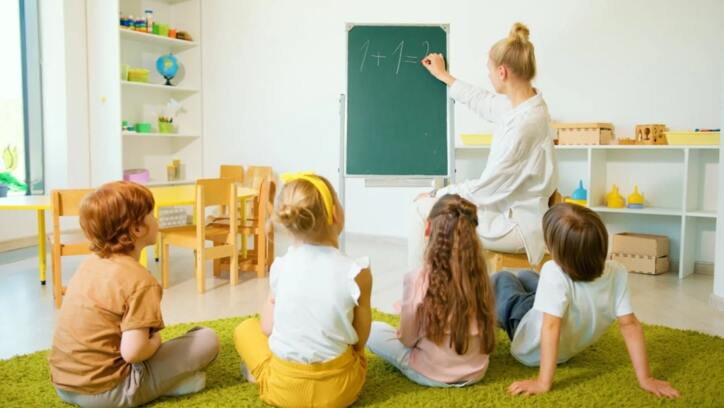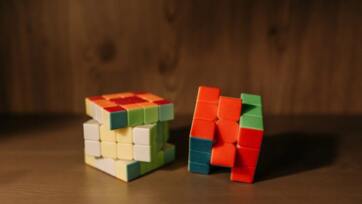Introduction
Student academic success becomes achievable through developing their confidence during educational development processes. Elementary school students require thorough knowledge across different subjects, yet mathematics is especially challenging. The students' mathematics comprehension improves with their confidence when they take daily quizzes. A consistent quiz approach provides benefits beyond mathematics skills that strongly develop student trust in their ability to succeed. The article examines how routine math quizzes enhance student confidence at the elementary school level and the relevant reasons for their necessary inclusion in educational practices.

Developing a Regular Schedule along with an Emotional Baseline
Establishing daily math quizzes is fundamental for early learners because consistency helps manage their training. Students develop a stable learning environment through daily exposure to math problems. Elementary students find daily math quizzes reassuring since they show that math is not separate from daily practice but a fundamental skill they should regularly improve. Getting familiar with quizzes improves student self-ownership in their educational progress since they recognize what to study and when to test their knowledge. Students develop stronger confidence since they understand their expectations and can handle upcoming difficulties better.
Boosting Memory Retention Through Repetition
Mathematics mastery requires students to practice through repetition since it is a fundamental aspect of learning school subjects generally. Students gain the opportunity to practice their learned material through daily math quizzes, which create frequent learning opportunities each day. Students who encounter the material multiple times via this method develop better memory retention because it helps establish long-term knowledge retention. Improving mathematical memorization and application leads students to experience achievement and success. Their academic growth from thoroughly mastering content enables them to view upcoming academic tasks optimistically.
Reducing Anxiety Around Math
Many elementary school students experience widespread anxiety when it comes to math. When students fear committing errors or confusion about course material, they become disconnected from the learning subject. Children who participate in daily math quizzes gain practice in a stress-free environment which avoids large test pressure. The habit of solving math problems and encountering errors during these exercises leads to normal behaviour for students. Through quizzes, students learn mistakes are natural to the learning process and, therefore, develop increased confidence in solving problems.
The system allows both students and teachers to obtain an immediate understanding of success or mistakes.
Daily math quizzes enable instructors to deliver quick and thorough feedback to students as their main benefit. After taking quizzes, students can immediately recognize their weak points, which provides instant results. Students can immediately learn from their misinterpretations and develop their skills right after taking the quiz through an immediate feedback system. Students better understand their educational strengths and weaknesses by seeing their mistakes while working to fix them. Continuous self-improvement helps students build their confidence and better command of their academic development.
Promoting Incremental Progress
The structure of mathematics requires students to construct knowledge from present learnings to advance deeper into the subject matter. Mastering one mathematical idea enables students to build a new understanding of the following topics. Students accumulate daily progress through the regular practice of quizzes in math. Students experience relief as they accomplish manageable tasks, which lead them through smaller steps ahead rather than being lost in the vast subject material. The students develop increased feelings of accomplishment because they repeatedly observe their measured progress, which could stem from minor developments. Little achievements built daily become large over time, demonstrating students' ability to handle progressively advanced content in any subject.
Encouraging a Growth Mindset
Students develop their growth and mindset through daily quiz assignments, which means they believe abilities and intelligence grow through continuous effort with determination. Students learn to handle quiz difficulties with persistence instead of getting angry because daily math quizzes expose them to various challenges. Students learn that learning involves challenges because practice allows them to enhance their abilities. Student development of long-term confidence depends on this mindset because it helps them understand they can grow their abilities in all subjects, including math.
Strengthening Problem-Solving Skills
Daily quizzes are an exceptional tool for students to strengthen their fundamental problem-solving techniques, forming the core of Math education. Students encounter a wide range of problems daily, so they develop multiple solution methods to deal with them. Students acquire different strategies for solving problems through mental calculations, drawing diagrams, and trial-and-error approaches while discovering various ways to approach an issue. Students gain more confidence through learning adaptable problem-solving because they develop abilities to handle challenges in mathematics, academic courses, and real-life situations.
Students gain visibility into their academic progress through objective assessment of their work.
Daily math quizzes offer students the most rewarding aspect through their visible signs of progress. The quizzes provide students with two ways to monitor their academic growth: they can see their test scores and check which problems they complete. Students find great motivation through concrete performance data demonstrating their developing skills and proven achievements of their dedicated efforts. Students feel greater confidence in their math abilities after seeing personal improvement, which leads them to maintain their learning efforts.
Supporting Self-Directed Learning
Students increase their educational responsibility through daily math quizzes, which promote automatic learning progress. Through repeated quiz exposure, students learn to take ownership of their academic development, which results in the development of individual progress accountability. The process promotes personal independence because students discover their problematic areas, which leads them to find improvement solutions. The students develop enhanced skills to direct their educational growth independently, so they no longer need to depend on teachers or outside help.
Enhancing Focus and Concentration
Taking regular math quizzes demands that students keep their attention directly on the assignment. Staying actively involved strengthens the attention span and cognitive control functions necessary for academic achievement. Daily problem-solving practice helps students develop improved focusing ability, which proves beneficial throughout their academic studies.
Increasing Motivation to Learn
As students observe their achievements through dedicated work, they will find improved performance, creating significant motivation. Daily math quizzes that students succeed in lead students to experience achievements which motivate them to persist with academic growth. The resultant motivation leads students to accept tougher learning materials and subject areas. Student motivation and confidence positively influence each other because brief achievements lead students to maintain their focus on challenging subjects while investing additional effort for better results.
Helping Students Build Resilience
Every day, math quizzes enable students to build their ability to recover from setbacks when learning mathematics. Guessing differently from question to question is natural in quiz activities because certain questions create difficulties for students. Students find opportunities for recovery from their learning challenges through daily quizzes. Student success in reviewing and correcting their mistakes teaches them how to keep going forward. Students create lasting resilience through monthly practice with proper feedback that leads them to embrace challenges as they become confident about their ability to handle upcoming troubles.
Creating a Positive Learning Environment
Daily math quizzes in the classroom help establish a learning atmosphere that promotes the ongoing development of students' academic progress. A teacher supports good classroom dynamics by actively promoting student growth alongside their dedication rather than solely discussing results. The encouraging classroom setting gives students the confidence to undertake challenges and understand their errors.
Strengthening Teacher-Student Relationships
Teachers who review quiz results monitor students' needs for extra help and use this information to build stronger relationships with students. Individual sessions between teachers and students create meaningful impacts on student confidence levels. Students who receive teacher support and active progress checks from their educators will develop greater confidence in their ability to succeed.
Increasing Parental Involvement
Students are encouraged to continue practicing because involvement with the support system promotes their improvements. Students build increasing self-assurance when they experience school-based and home-based encouragement because they understand they have multiple supporters who want them to succeed.
Developing Time Management Skills
Students must finish their assigned math quizzes during specific daily periods which aids their development of pivotal time management capabilities. Students learn valuable task prioritization skills, organizational methods, and time-conscious work habits under restricted periods through efficient time management when completing their quizzes.
Conclusion
Delivering daily math quizzes generates various advantages that reach past mathematical skill development. The structured, supportive learning environment provided by quizzes enables young students to gain confidence because it gives them regular chances to achieve success, receive feedback and improve themselves. Students build trust and motivation toward learning by making progress through repeated practice of essential skills, including resilience and time management. Teachers and parents should incorporate daily quizzes as part of their educational routines to develop student confidence to support their academic advancement.









